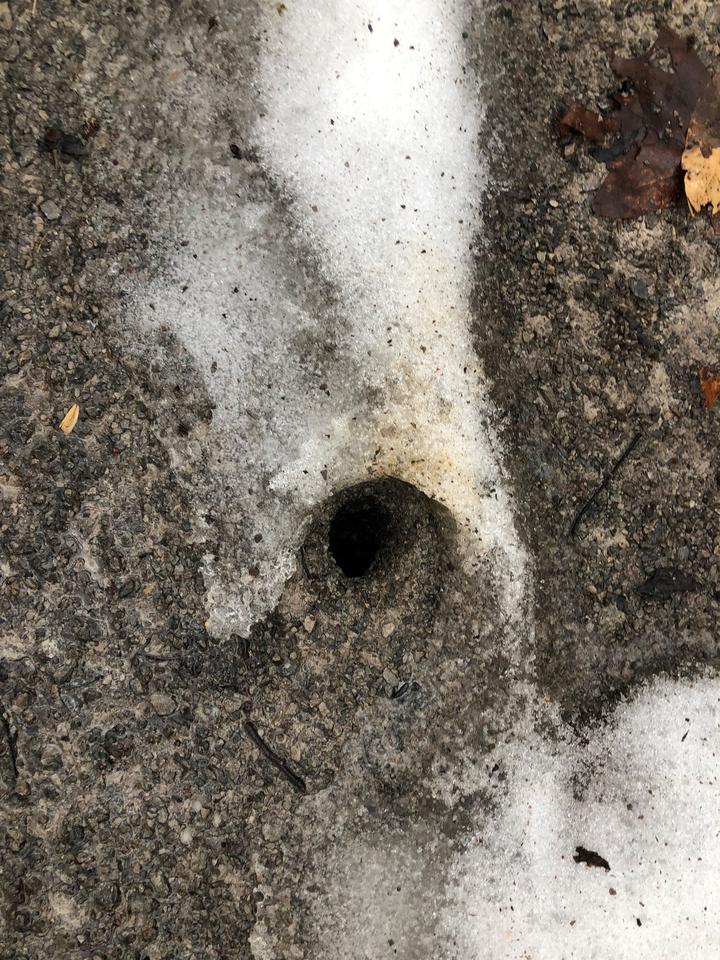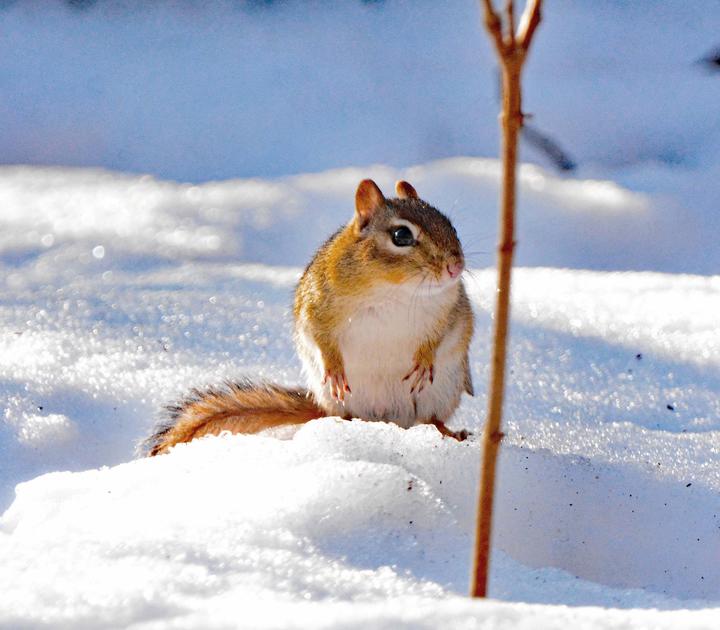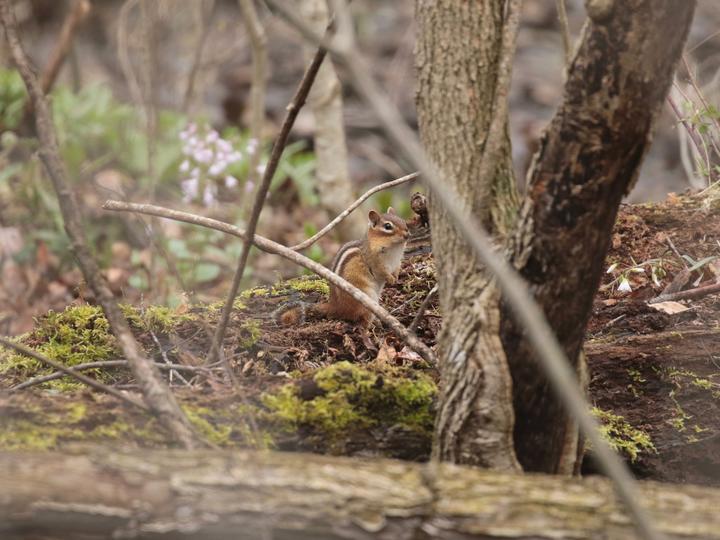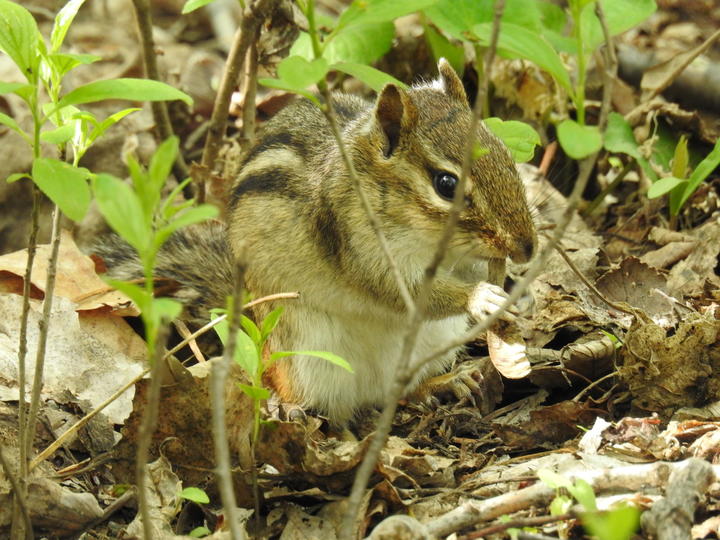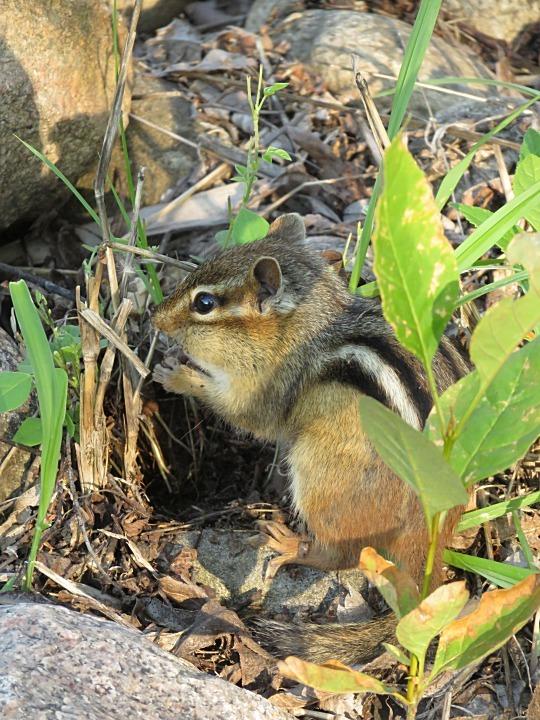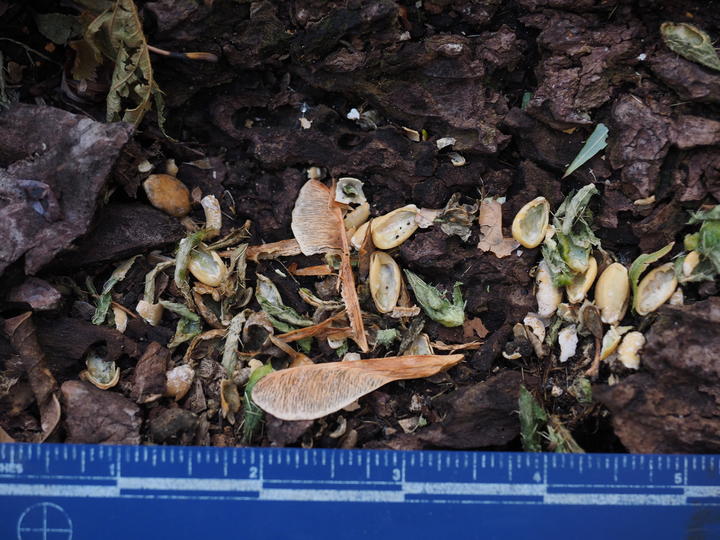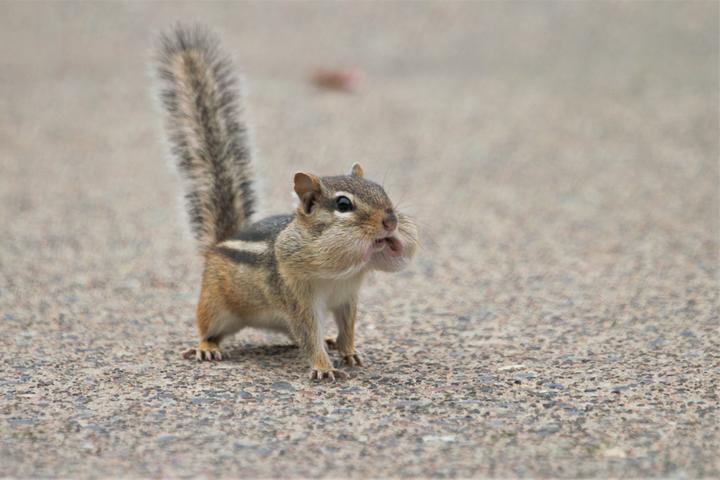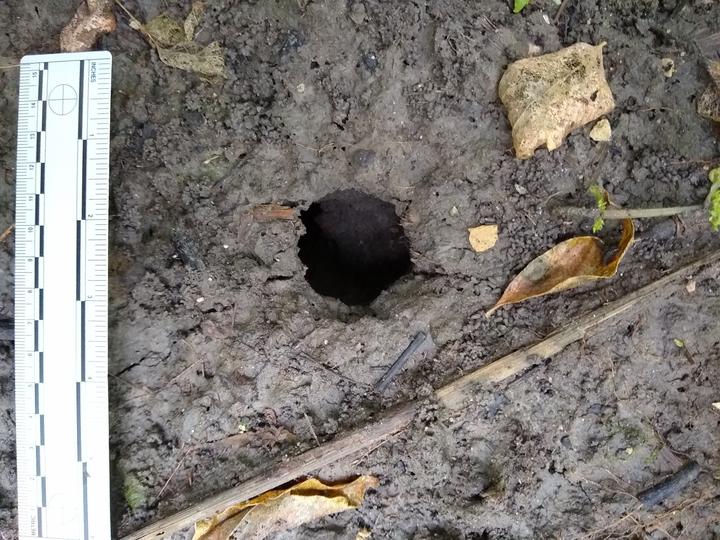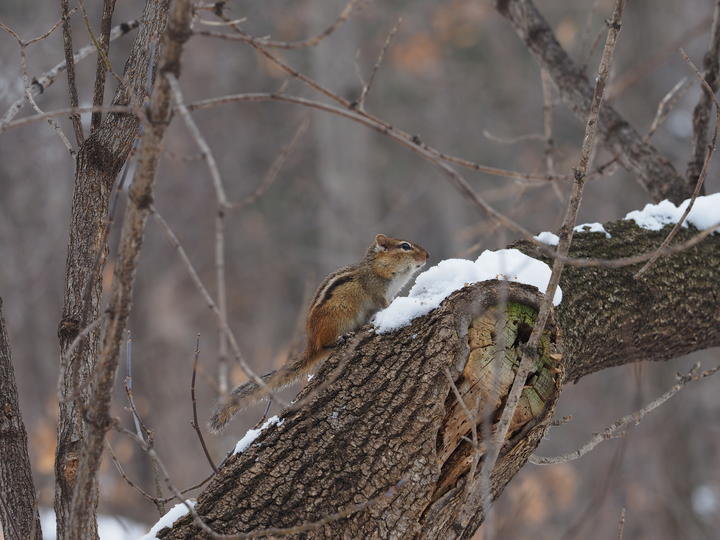More names for this animal
Anishinaabemowin: Agongos
Dakota: Taṡnaheça hdeṡka
The Dakota and Anishinaabe were among the earliest people to name Minnesota’s plants and animals, as well as to understand them in relation to Minnesota’s climate and seasons. Those original names are still in use, and several are included on the Season Watch website.
Latin (or scientific name): Tamias striatus
The scientific community has a convention of assigning agreed-upon Latin names to every kind of organism. Using scientific names helps people communicate confidently about the same organism and organize lifeforms based on how closely related they are.
Page contents
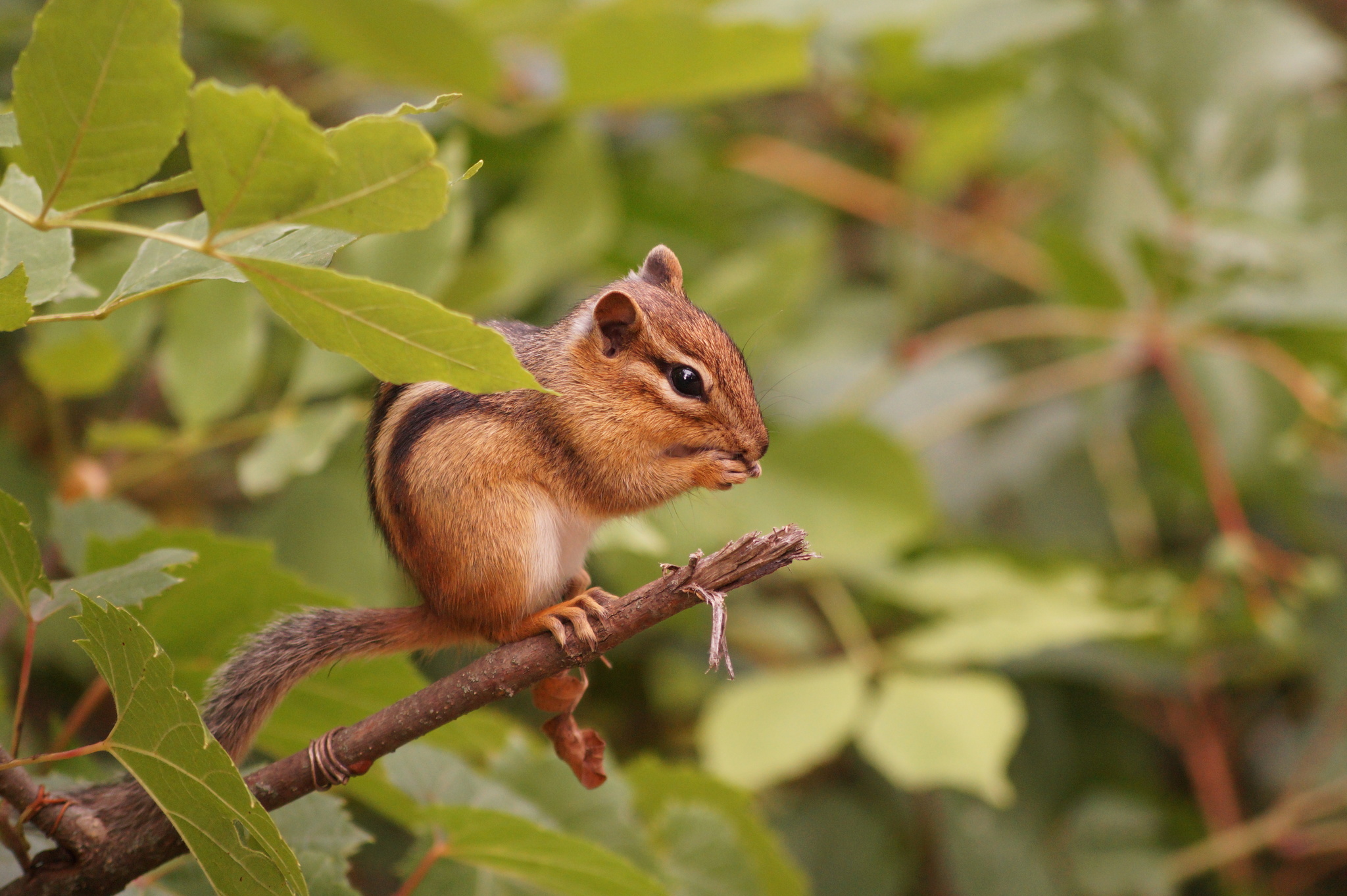
August 7, 2021, Crow Wing County, Minnesota
Photo © chriskm, some rights reserved (CC-BY-NC)
iNaturalist observation
About the eastern chipmunk
- Eastern chipmunks are small, chestnut colored rodents with both dark and light stripes on their backs.
- They are opportunistic omnivores meaning they will eat small animals when they are easily available, but often they eat acorns, seeds, and berries that they will store in their burrows.
- These chipmunks inhabit all of Minnesota except for the southwest corner.
- Eastern chipmunks will mate twice a year: once in the spring and once in mid-summer.
- Chipmunks are active throughout fall, but then retreat to their burrows for winter.
Visual guide to phenology
Watch for chipmunks' presence (or absence) and behaviors at different times of year.
Note to observers
This page explains general clues to watch and listen for when observing eastern chipmunk phenology. However, this page does not explain how to identify this animal or collect data in a standardized way.
- For help with identification, see the Minnesota DNR's webpages on mammals.
- For guidance on collecting data, see Nature’s Notebook.
Graphs and historical data
Note: The Orientation Center provides a map, as well as information on reading graphs; interpreting summary statistics, who collected the data and how; and how to download datasets for independent exploration.
First seen
- Earliest: March 14 (occurred in 2014)
- Average: March 28
- Latest: April 12 (occurred in 2002)
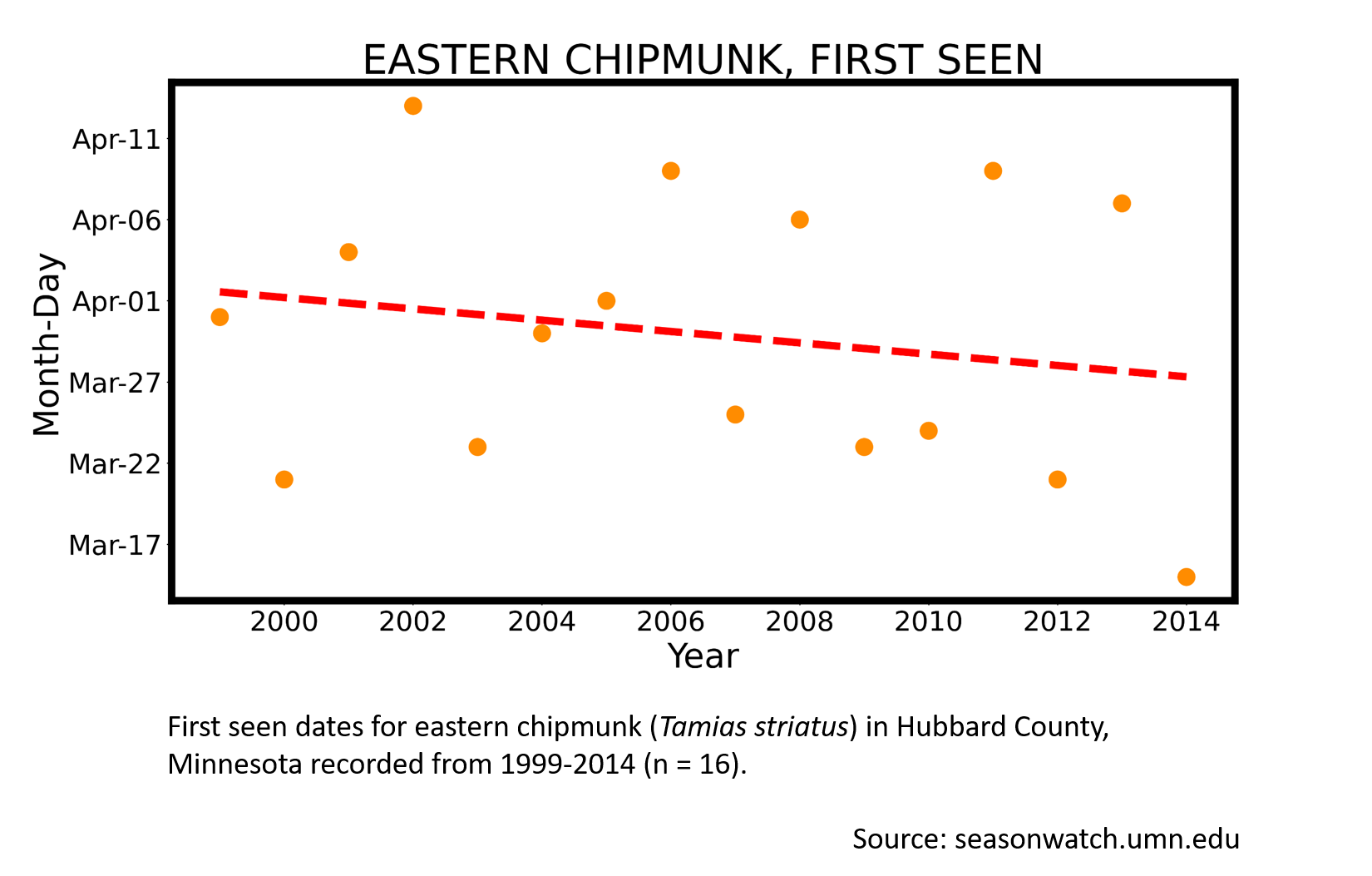
More resources
Keep exploring Season Watch
Keep exploring Season Watch
Co-author: Lynsey Nass, Minnesota Master Naturalist
